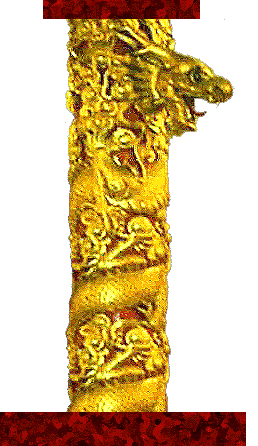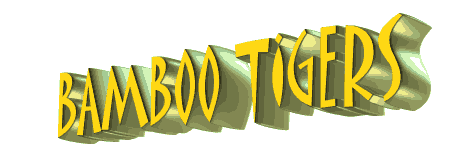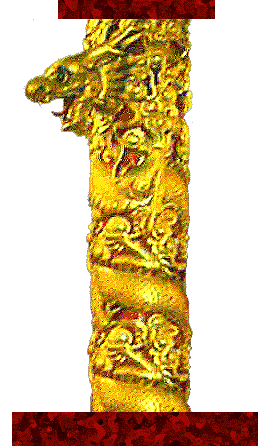| |
The Dragon Force accumulated information faster than any single unit ever had. And it developed a list of possible suspects in the Golden Dragon case--a list which included, as it would turn out, the names of most of those who would eventually be arrested and charged in the massacre. Still, the art of a criminal investigation leading to successful prosecution lay in more than mugshots sketched on a blank canvas. The background had to be filled in and the whole picture colored with proof before it could be presented to a jury for conviction.
In the process, the Force also formulated a list of inside- and outside-Chinatown gang members, which, at the time, led to massive confusion. There had been a bifurcation of the Wah Ching Gang, AKA the W.C.'s. Which ones were part of the old Wah Ching core, and which had gone over to Michael "Hotdog" Louie, and were there other new leaders as yet unknown? Then there were the Joe Boys and the Dai Ben, or "Big Cookies," and yet another group suddenly emerging, called the Kit Jai, or "Young Kids." The Hop Sing Boys, the Wah Ching and Ping Yuen Boys were listed as insiders, and the Joe Boys, the Dai Ben and, later, the Kit Jai, were considered outside-Chinatowners. The Hotdog Louie Group, nebulous because of Hotdog's random associations, seemed ready to tumble in any direction.
Within days of the Gang Task Force's birth, a gambling house robbery occurred. A young man named Johnny Lee was murdered. The Johnny Lee homicide became another of many cases the Force took under its wing, crowding the Golden Dragon for space in the rapidly building files. The gang kids were generally lying low, but school was starting soon, and they would automatically come into view.
The schools were quiet the first week or so of the semester, which began with hardly a murmur. Then things picked up. Reports filtered in about kids keeping guns in their lockers. As these weapons were confiscated by police for unlawful possession, the Force had to test fire them all to compare with slugs and shell casings recovered at the Golden Dragon. Dick Gamble had that awesome chore, knowing that for every one he tested there were dozens more out there somewhere, in gang kids' possession. The unit had also begun to build up its own arsenal--but by legal methods--starting with shotguns. There was no room for the shotguns in Homicide, so they were stored at Southern Police Station which was situated three floors below Homicide at the Hall of Justice. No matter where they were kept, at least they signified the end of the dangerous incongruity of an unarmed paramilitary unit facing a well-armed enemy on the firing line.
On the 24th of September, the Japanese Cultural Center's fall parade and festivities brightened Post Street, the two-lane avenue intersecting Japantown, (an almost literal translation of its proper name, Nihon-no-machi, "Japan's Town," but habitués, using the shorter form, called it "Nihonmachi"). Dan Foley got a call from Rich Uland, a special policeman in the area, relating that there had been a fight involving some Joe Boys who were crashing the festival. A Japanese-American boy named Eugene Yoshi, who claimed to be a Joe Boy, had snatched a radio from another kid, jumping him in company with half a dozen fellow gangsters.
Foley took down the names of all the self-proclaimed Joe Boys and was surprised to discover that a lot of them were not on the Force's list. He was equally surprised that the usually all-Chinese gang included a non-Chinese. He began to suspect that the claws of the bamboo tigers scratched deeper into the fabric of San Francisco's ethnic communities than had been thought previously. Rich Uland and another special, Wayne Hom, provided Foley with a list of more than 50 cars and people they had taken on in the Japantown area over the past few months. At last there was a specific unit to receive such information. Foley perceived that had the Gang Task Force been established six months earlier, the Golden Dragon might never have happened.
The schools, as hoped, provided a proving ground for the gang kids to reveal themselves. A young man at Lowell High School was attacked by Wah Ching. They accused him of being a rival youth whom they had seen on their turf in the vicinity of Larkin and Washington Streets. It was a case of mistaken identity. Foley and Mollat interviewed the assaulted boy and finally located the real "invader," who had braved the W.C. area to pick up his girlfriend. The incident dramatized the minor infractions of gang taboos that so often led to mayhem. In this instance, serious injury or homicide was averted, and some good came of it--the Force's gang list grew.
Information was received that the Chinese gangs were busily recruiting kids at a number of schools, as if preparing for all-out war. A flood of calls poured in from educators frightened that their institutions might any day be found in the war zone. Feeling the rising heat of possible combat, the members of the Gang Task Force requested personal radios to carry on foot patrol and established an exclusive communications channel to avoid cross traffic from routine station calls.
It was well-nigh impossible to avoid the conclusion that real trouble was in the air. An informant reported that at the Hunan Restaurant, located at Clay and Kearny in Chinatown, gang kids were hanging out every night exposing amounts varying from four to five thousand dollars. A heavy-set Chinese man about 27 years old was supposedly arranging the purchase of a large number of guns.
The regular hangouts of the inside-Chinatown groups occupied strategic locations in the Chinese area. The Sun Sing Theater fronted on upper Grant Avenue, near the corner of Jackson and across the street from the Ping Yuen Bakery. Jackson Street had been the scene, traditionally, of heavy gang activity, and counting the heads bobbing over coffee in the Ping Yuen Bakery would have yielded a high score of gang kids any afternoon of the week. The Palace Theater sat near the entrance to the Broadway tunnel, and a block from the nightclub district of North Beach, along the northern frontier of Chinatown.
The Pagoda Theater, at Columbus and Powell, looked out over spacious Washington Square which faced the white and usually night-lighted façade of the Church of St. Peter and St. Paul. The trees of the park supplied superb cover for after-dark rendezvous to deal in everything from pot to guns--not to mention the sport of occasionally ambushing enemies who couldn't resist a good movie at the Pagoda. These three theaters showed Chinese films exclusively, and sometimes staged Chinese opera and other imported entertainments from Hong Kong and Taipei, thus providing strong magnets attracting outsiders into forbidden territory.
The insiders also gathered at the Hop Sing Tong building in Waverly Place, around the corner from the Golden Dragon--which was owned by members of that Tong; the Rickshaw Bistro, an upstairs disco on lower Grant a few steps beyond the pailou arch, covering the southern entry to Chinatown; the Holiday Inn, on the western side of Kearny Street, a windowed slab of concrete resembling a long-shanked, inverted "Y", one of whose lower levels connected by footbridge to Portsmouth Square, an outdoor social center in Chinatown--where gang kids leaned against the Robert Louis Stevenson Memorial stele and shared marijuana joints puffed in cupped hands.
The outside-Chinatown boys--and their girls--gravitated toward Japantown Bowl, open on a 24-hour schedule weekends and till midnight weekdays, and the Nihonmachi Leisure Center, also in Japantown. The outsiders had less concern for turf control and tended to spread themselves all over the Richmond--especially in New Chinatown from Arguello to Park Presidio Boulevards--and the Sunset, the two districts bordering Golden Gate Park north and south, comprising "the Avenues." The turf they craved was already under the insiders' control. Everybody wanted Old Chinatown.
As the fall semester wore on, it became increasingly evident that something was brewing. An unprecedented number of requests from Chinese students for transfers from one school to another suggested massive regrouping into large, single-cell units. Older Wah Ching kids were transferring out to Lowell High School in the outer Sunset near San Francisco State University, and to George Washington High on 32nd Avenue in the Richmond. Younger Wah Ching headed for Herbert Hoover Junior High, relatively close to their elder "brothers" at Lowell. A few splintered Wah Ching factions, mostly very young, staked out at Marina Junior High in the Marina District north of Lombard Street, the Golden Gate Bridge approach.
Abraham Lincoln High, in the middle of the Sunset, attracted Joe Boys, as did Galileo High and Francisco Junior. The latter two lay a few blocks apart, not far from Fisherman's Wharf and, ironically, closer to Chinatown than any schools chosen by the Wah Ching. Mission High, with its front view facing south toward Dolores Park and the Mission District--a largely Latino area--began to number many Kit Jai, the newest group on the Chinese scene, among the Hispanics who formed the majority of the student body.
| |
|









